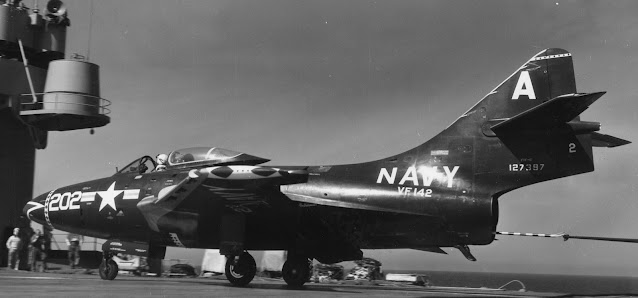Navy pilots landed the early jets on carriers as they always had, with the canopy open. It facilitated rapid egress from the cockpit if they had to ditch.
If the engine quit, below about 1,000 feet, ejection was not an option to ditching.
The early ejection seats were primarily bailout assists, necessary at the higher speeds that the jets were capable of compared to piston-engine powered fighters.
However, on axial deck carriers a last-ditch barricade was added for jet landings because the Davis barrier—that was intended to stop them if they failed to be arrested by the customary means, the tailhook engaging one of the arresting cables—could sometimes be defeated (see https://thanlont.blogspot.com/2010/10/barriers-and-barricades-one-more-time.html).
This, however, introduced a new concern, that the heavy cable going across the deck at the top of the barricade might wind up in the cockpit instead of ending up aft of it.
As a result, jet pilots had to choose between the possibility of ditching with the canopy closed and unable to get it open in time and that of landing long and getting decapitated by the barricade's upper strap.
As it happened, many of the subsequent generation of carrier jets had clam-shell rather than sliding canopies and were therefore closed on both landing and takeoff. The two Douglas F4D Skyray prototypes actually differed in that respect, with the clam-shell being selected for production:
BuNo 124587 is on the left and 124586 is on the right.My guess is that given the cockpit pressurization required, the clam-shell configuration was lighter and became the standard.





No comments:
Post a Comment